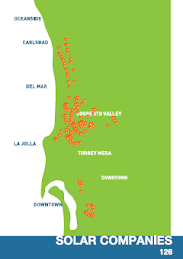1. Program Description
The CREBs program provides eligible entities with the opportunity to issue tax-credit bonds to finance renewable energy installations on their facilities. Eligible entities apply for allocations under the CREBs program. The eligible entities then use their allocations to issue the tax-credit bonds.
The CREBs program is complementary to other funding mechanisms for renewable energy installations. Thus, using CREBs allocations to finance a renewable energy installation does not preclude an eligible entity from using certain other funding sources for that installation.
2. Eligible Entities
The CREBs program is available to public power providers, cooperative electric companies, and governmental bodies. The CREBs program defines “governmental bodies” as states, Indian tribal governments, and their political subdivisions. Political subdivisions include state and local public agencies such as counties, cities, regional transportation authorities, water districts, fire districts, school districts, community college districts, and public universities.
3. Eligible Renewable Energy Installations
Eligible renewable energy installations include solar, wind, geothermal, open-loop biomass, closed-loop biomass, small irrigation, hydropower, landfill gas, marine renewables, and trash combustion systems.
4. Features of Tax-Credit Bonds
The CREBs program does not provide direct funding to eligible entities for renewable energy installations. Instead, the eligible entities use allocations under the CREBs program to issue tax-credit bonds to finance those installations. The eligible entities pay back only the principal of the bond, and the bondholder receives federal tax credits in lieu of the traditional bond interest. The tax credit rate is set daily by the U.S. Treasury Department. Under past SD\680853.12
CREBs allocations, the credit could be taken quarterly on a dollar-for-dollar basis to offset the tax liability of the bondholder. Under the new allocation, however, the credit has been reduced
to 70% of what it would have been otherwise.
Tax-credit bonds issued under the CREBs program differ from traditional tax-exempt bonds because the Internal Revenue Service (IRS) treats the tax credits issued through the CREBs program as taxable income for the bondholder. The bondholder may take the tax credit each year that the bondholder has a tax liability, as long as the credit amount does not exceed the limits established by the Energy Tax Incentives Act of 2005.
Theoretically, the eligible entities issue the bonds with a 0% interest rate. In practice, however, the eligible entities typically must issue the bonds at a discount or make supplemental interest payments in order to find a buyer. Also, eligible entities may issue pooled financing bonds, as long as they enter into written loan commitments with each borrower before the issue date of the bonds.
5. Available Allocations
The Energy Improvement and Extension Act of 2008 provided $800 million for the CREBs program, which has not yet been allocated. The American Recovery and Reinvestment Act of 2009 (i.e., the federal stimulus bill) provided another $1.6 billion for the program, which also has not yet been allocated. Thus, the new allocations for the CREBs program total $2.4 billion. The amount available to governmental bodies is one-third of that total, or $800 million. Another third goes to public power providers, and the final third goes to cooperative electric
companies.
6. Key Deadlines
The IRS, which administers the CREBs program, has announced that applications for the new allocations are due August 4, 2009. The allocations are valid for three years from when the IRS grants them and will be forfeited if eligible entities do not use them before then to issue tax-credit bonds. Reporting requirements and deadlines are similar to those for tax-exempt state or local government bonds.
7. Allocation Methodology
The IRS has adopted a smallest-to-largest allocation methodology for governmental bodies. Under this methodology, the IRS will allocate CREBs funds on a project-by-project basis. The first allocation will go to the project requesting the smallest dollar amount, the second allocation will go the project requesting the next smallest dollar amount, and so on until the $800 million available to governmental bodies is used up. This methodology advantages applications requesting small dollar amounts for individual projects. SD\680853.13
For allocation purposes, the IRS treats related projects as a single project. The IRS defines “related projects” as projects that: (1) are owned by the same entity or a related party; (2) are of the same type; (3) are located on the same site; and (4) are integrated, interconnected, or directly or indirectly dependent on each other.
8. Required Application Information
The IRS issued Notice 2009-33 to provide guidance on applying for the new CREBs allocations. The notice includes an application template. As the notice and application template state, applications for allocations must include the following information:
· The amount of funds requested.
· A detailed description of the project, including reasonably expected costs of components, such as land, site preparation, equipment, installation, transmission facilities, and capacity.
· Anticipated dates for beginning construction, installation, and operation of the project.
· Certification by a licensed engineer that the project meets the technical requirements under the CREBs program for renewable energy installations.
· A list of regulatory approvals needed for the project and the applicant’s plan and timeline for obtaining the approvals.
· A detailed financing plan, including all reasonably expected sources and uses of financing and other funds, the status of financing, the anticipated date of bond issuance, the sources of security and repayment for the bonds, the aggregate face amount of bonds expected to be issued for the project, and the issuer’s expected schedule for spending proceeds of the allocation.
Tuesday, April 20, 2010
Subscribe to:
Post Comments (Atom)



No comments:
Post a Comment